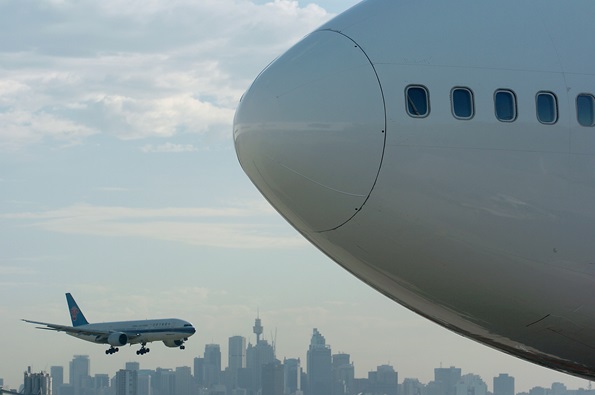China-Australia open skies agreement to boost flights
03 December, 2016
4 min read


An already rapid growth in flights and cheap fares between China and Australia is expected to accelerate after the two countries signed an “open skies” agreement which removes all capacity restrictions on air services between them.
The landmark bilateral agreement, announced on Sunday, removes restrictions on flights to and from Chinese cities to Australia’s major gateways of Sydney, Melbourne, Brisbane, and Perth. Flights to other Australian cities are already unrestricted.
In addition to boosting tourism between the two countries, the arrival of more services by the highly competitive Chinese carriers is likely to be a boon for Australian travellers seeking cheaper fares for travel to and beyond China.
The Australian government, tourism authorities and airlines have made no secret of the importance they attach to fast-growing Chinese tourism, which already brings almost $A9 billion into the country.
Both Virgin Australia and Qantas are moving to capitalise on the boom with new services to mainland China as well as by leveraging their Chinese partnerships.
Qantas, which has China Eastern and China Southern as partners, already flies 35 services a week to Shanghai and Hong Kong, although the latter is covered by a separate bilateral agreement and is not part of the open skies deal.
It will return to Beijing in January, boosting the number of services by 18 per cent to 42 per week. The Jetstar Group also flies 20 return services from Singapore and Vietnam, while Qantas Freight operates 40 services a week into Shanghai, Chongqing, Zhengzhou and Hong Kong.
“These expanded arrangements lay the foundations for long-term growth in the Australia-China aviation network, at a time when the Qantas Group has its biggest ever presence in the market,’’ a spokesman said on Sunday.
“ Just in the past few months, we’ve announced a new Qantas passenger service to Beijing, expanded our partnership with China Eastern, and signed new deals to help Australian exporters grow their business in China.
“We’re looking forward to exploring more opportunities to unlock Chinese tourism and trade in 2017.”
Virgin, which is 40 per cent Chinese owned and declined to comment, has yet to confirm a destination but speculation has centred on Beijing or Shanghai.
Australian Transport Minister Darren Chester said the removal of all capacity restrictions would be an important enabler for increased trade and tourism.
“We have also liberalised traffic rights and code share arrangements, which are important for Australian airlines,’’ Chester said. “This will enable Australian and Chinese airlines to service destinations between and beyond both countries, and will allow them to take full advantage of their cooperative arrangements with their commercial alliance partners.’’
Trade and Tourism Minister Steve Ciobo said there was “unlimited potential for Australian tourism” following the agreement.
"China is Australia’s fastest growing and highest spending international visitor market. More than 1 million Chinese tourists visited Australia in 2015-16 — up 22.3 per cent from the previous year — and spent almost $A9 billion during their stay,” he said.
“The outbound China market is predicted to double to over 200 million travellers annually by 2020, this agreement will help Australia snare a larger slice of that, creating more Australian jobs and economic growth.
Sydney Airport, which will host seven airlines serving 14 Chinese cities by January, said the agreement recognised the huge potential of the Chinese market to Australian tourism and trade.
Chinese passengers make up 15 per cent of foreign resident passengers at the airport and are the biggest group of foreign inbound passengers.
“Our airline partners have expressed strong interest in the potential for new services from China, building on our recent growth and our position as a world leader in Chinese long-haul routes,’’ Sydney Airport chief executive Kerrie Mather said. “This decision delivers expanded bilateral capacity ahead of demand, maximising the value to the visitor economy.”
Mather said the announcement was well timed ahead of the upcoming Lunar New Year period and next year’s Australia-China Year of Tourism.
Next Article
Qantas triples profit but misses mark

Get the latest news and updates straight to your inbox
No spam, no hassle, no fuss, just airline news direct to you.
By joining our newsletter, you agree to our Privacy Policy
Find us on social media
Comments
No comments yet, be the first to write one.
